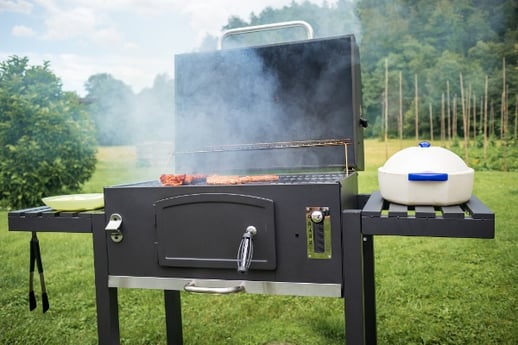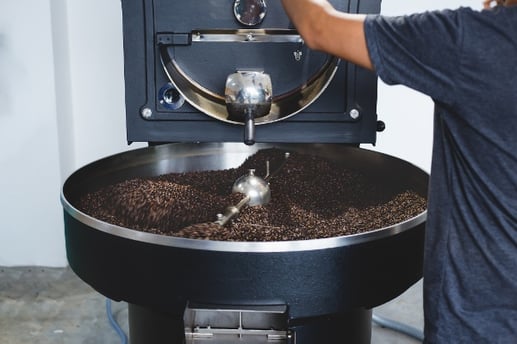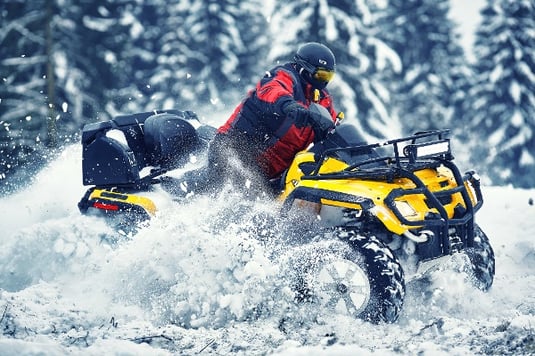How Forestry Professionals Choose the Right Tree Marking Paint
Revolutionizing Forestry Management with HIGHBALL® Tree Marking Paint's One-Pass Marking System
This Section Covers Resources
Revolutionizing Forestry Management with HIGHBALL® Tree Marking Paint's One-Pass Marking System
When metal components face sustained or cyclic heat, the choice of coating can determine how long they last before corrosion,...
Coating failures on exhaust systems, silencers, and other heat-exposed steel components are more than a cosmetic issue. They can shorten...
This Section Covers Resources
Revolutionizing Forestry Management with HIGHBALL® Tree Marking Paint's One-Pass Marking System
When metal components face sustained or cyclic heat, the choice of coating can determine how long they last before corrosion,...
Coating failures on exhaust systems, silencers, and other heat-exposed steel components are more than a cosmetic issue. They can shorten...
Why do temperatures of 800° F – 1200+° F increase substrate failure risk?

A component is at higher risk of corrosion if it operates at extreme temperatures and is not protected by a coating or other corrosion-preventing barrier. Many systems include components subjected to extreme temperatures, such as components adjacent to combustion, exhaust, braking or friction surfaces that generate a large amount of energy. Some systems reach high temperatures by design, such as radiant heating appliances like wood stoves and gas stoves.
Prudent industrial designers extend product lifespan with corrosion prevention for all components. A coating provides the added benefit of customization; each component’s unique operating condition drives coating specification. High temperature coatings are cost-effective film barriers that defend substrates from contact with moisture and offer aesthetic choices.
Regular organic coatings cannot substitute for high temperature coatings if heat exposure exceeds 250° F. Organic coatings will develop microscopic pits and adhesion issues. Initially imperceptible imperfections in the coating film allow water to enter and corrosion to begin. Visible signs of corrosion such as streaks or rust spots in a droplet pattern eventually appear. The part will structurally weaken and risk failure before the visual signs of corrosion appear to the naked eye.
A high temperature paint or high temperature powder coating maintains adhesion to the metal substrate as expansion and contraction occur with heating and cooling. The high temperature-rated coatings do not burn off, discolor, or become structurally compromised at high temperatures. This protects the part from corrosion and failure throughout the life of the product.
How do high temperature coatings prevent component failures at 800° F - 1200+° F?
An extreme high temperature coating protects a component throughout its heating and cooling cycle with little effect on film quality or adhesion. The protective film fully encapsulates the substrate and maintains integrity as all binders and pigments are high temperature rated. Cross-linked silicone polymer chains add strength to the coating and enable it to survive in an abrasive environment. Zinc additives also provide additional protection in abrasive or corrosive environments. The zinc inhibits corrosion of the underlying substrate should surface scratches compromise the coating.
The part will remain structurally sound as long as the coating remains intact. High temperature-rated aerosols can effectively touch up and extend the life of the coating.
Why do extreme high temperature coatings only go to 1200° F?
At 1200° F, the underlying substrate begins to change shape and the silicone bonds of the coating become compromised. The degree to which this affects adhesion depends on the thickness of the metal. A stainless steel substate can be used above 1200° F as it is bare metal galvanized with zinc.
How do extreme high temperature coatings (800° F -1200+° F) differ from medium and high temperature coatings (400° F - 800° F)?

Extreme high temperature coatings (800° F – 1200+° F) are formulated to produce a high density of cross-linked chains when initially heated to above 800° F. The high density of cross-linked structures gives the coating its properties of hardness, chemical resistance, and UV resistance. The coating will not reach its maximum potential without curing at this 800° F temperature.
High temperature coatings in this extreme range have limited aesthetic choices as few extreme temperature pigments are available. High and medium gloss levels are also not maintainable at extreme temperatures. Therefore, function takes priority over aesthetic choice in extreme temperature coatings. Most extreme temperature coatings are flat or low-gloss and available in black or silver.
Medium temperature and high temperature coatings in the 400° F - 800° F range can have higher organic content, more film flexibility, higher gloss, greater color selection, and sometimes a less aggressive cure cycle. There is a wider array of colors and gloss levels at these temperatures.
See our medium and high temperature powder coatings here.
See an example of our medium and high temperature liquid coatings on our Stove Bright Color Card.
What are the chemical differences between high temperature coatings and non-high temperature rated coatings?
The carbon-carbon bond of typical organic coatings are not suited for high temperature resistance. Alkyd, acrylic, polyester, epoxy and other organic resins begin to degrade at temperatures as low as 250° F – 300° F. Visible signs of compromise such as color change due to oxidation will appear if heated to 400° F for an extended period. The process of oxidation causes film thickness loss and weakness.
High temperature coatings utilize silicone polymer (polysiloxane) resins as the backbone of the technology. The bond strength of the Si-O bond is 452 kJ/mol compared to 350 kJ/mol for the C-C bond found in organic polymers. This increased bond strength gives silicone polymers much better heat and UV resistance than organic polymers. This translates into better gloss retention and durability when used in coatings. Silicone polymers are available with heat resistance up to 1200° F.
Silicone-based coatings become more scratch-resistant, hard, and adhesive to the underlying substrate when heated. The silicone polymer chains crosslink during this one-time curing process. High temperature coatings often utilize modified silicone acrylics because the carbon-carbon bond component provides better durability prior to curing. The organic acrylic component burns off during the curing process. A cross-linked silicone polymer remains as the main protective component. Coatings should always be cured at the recommended temperature to ensure cross-linking of the polymer matrix is achieved. Exposure to high temperatures subsequent to curing will drive organic components from the coatings and allow for the completion of the cross-linking process between inorganic components. Failure to cure fully could cause color variation and adhesion problems.
What are common uses of extreme high temperature powder coatings or liquid coatings?
High temperature coatings are used broadly in combustion-powered equipment and heat-producing equipment. Below are just a few examples of high temperature coating applications.
Exhaust systems on ATVs, motorcycles, snowmobiles, farm equipment, heavy machinery, and other high-performance equipment are typically protected with high temperature coatings. Components of these systems subjected to the radiant heat of combustion include mufflers, headers and manifolds. The coatings must be highly durable because of the abrasive environments where this equipment is used. They also must be flexible during frequent temperature changes caused by the hot exhaust system contacting cooling elements such as rain or snow.
Industrial-sized exhaust systems, incinerators, and silencers rely on high temperature coatings as part of a long-term maintenance plan for previously installed equipment. If applied to exterior equipment, the coating must be UV-resistant and maintain integrity at high temperatures while the surrounding environment may be freezing cold. The coating must also be long lasting because the equipment may be difficult to access and recoat.
INFERNEX® Extreme High Temperature Coatings
INFERNEX® Extreme High Temperature Coatings are formulated to protect steel and aluminum in interior or exterior extreme temperature applications. See what's available in extreme high temperature powder coatings or liquid coatings. For a complete guide to INFERNEX® Extreme High Temperature Products, follow the link below.
Ready to find the right coating for you?
speak to a Coatings expert 1-800-537-7201



Copyright © Forrest Technical Coatings. All Rights Reserved
Site Created by Cayenne Creative